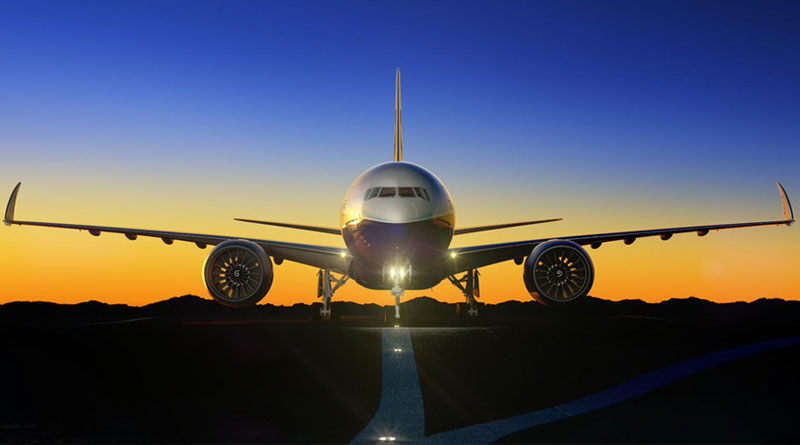Boeing Forecasts USD 8.7 Trillion Aerospace and Defence Market Through 2028
20-year commercial outlook projects USD 16 trillion market, powered by rising requirement for 44,040 new jets and related services
A strong commercial aviation industry, stable defence spending and the need to service all platforms throughout their lifecycle are driving a growing aerospace and defence market, according to the Boeing Market Outlook. Released today at the Paris Air Show, the outlook values the aerospace and defence market at USD 8.7 trillion over the next decade, up from USD 8.1 trillion a year ago.
The Boeing Market Outlook (BMO) includes a USD 3.1 trillion projected demand for commercial airplanes through 2028 as operators replace older jets with more capable and fuel-efficient models, and expand their fleets to accommodate the steady rise in air travel across emerging and established markets.
The BMO also projects USD 2.5 trillion of defence and space opportunities during the next decade as governments modernize military platforms and systems, pursue new technologies and capabilities and accelerate exploration from sea to space. The projected spending – spanning military aircraft, autonomous systems, satellites, spacecraft and other products – continues to be global in nature with 40 percent of expenditures expected to originate outside of the United States. Supporting the defence, space and commercial platforms with lifecycle solutions will fuel a services market valued at USD 3.1 trillion through 2028.
“Aerospace and defence continues to be a healthy and growing industry over the long term, boosted by strong fundamentals across the commercial, defence and services sectors and demand that is geographically-diverse and more balanced between replacement and growth than ever before,” said Boeing Chief Financial Officer and Executive Vice President of Enterprise Performance & Strategy Greg Smith.
Boeing today also unveiled its 2019 Commercial Market Outlook (CMO), a longer-term forecast that delves deeper into the market for commercial airplanes and services. The newest CMO shows growing passenger volumes and increasing airplane retirements will drive the need for 44,040 new jets, valued at USD 6.8 trillion over the next two decades and up 3 percent from a year ago. The global commercial airplane fleet will also sustain the need for aviation services valued at USD 9.1 trillion, leading to a total commercial market opportunity of USD 16 trillion through 2038.
“Time and again, commercial aviation has shown itself to be extremely resilient. Notwithstanding some recent moderation in passenger and cargo traffic growth, all indications are pointing to our industry sustaining its unprecedented streak of profitable expansion. In fact, we see a market that is broader, deeper and more balanced than we have seen in the past,” said Boeing Commercial Marketing Vice President Randy Tinseth. “The healthy market fundamentals will fuel a doubling of the commercial fleet over the next two decades and a massive ecosystem of lifecycle solutions to maintain and support it.”
Of the new airplane deliveries, forecasters say 44 percent will go toward replacing aging aircraft while the rest will accommodate traffic growth. Together, the new jets support an industry where passenger traffic will grow an average 4.6 percent and cargo traffic will grow an average 4.2 percent. Factoring in the new airplanes and the jets that would remain in service, the global commercial fleet is expected to reach 50,660 airplanes by 2038. This is the first time the projected fleet has crested the 50,000 mark.
The biggest airplane segment remains single-aisles such as the 737 MAX, as operators are projected to demand 32,420 new airplanes. This USD 3.8 trillion market is driven in large part by the continued strength of low-cost carriers, healthy replacement demand and continuing growth in Asia Pacific.
In the widebody segment, Boeing forecasts demand for 8,340 new passenger airplanes valued at more than USD 2.6 trillion over the next twenty years. Widebody demand is spearheaded in part by a significant wave of older airplanes that will need to be replaced beginning in a few years. Bolstering the demand for larger aircraft, operators are expected to need 1,040 new large production freighters over the forecast period.
The global airplane fleet will continue to generate significant demand for aviation services, including supply chain support (parts and parts logistics), maintenance and engineering services, aircraft modifications and airline operations. Over the next 20 years, Boeing forecasts a $9.1 trillion market for commercial aviation services with annual growth of 4.2 percent.
“This is a very dynamic and exciting marketplace, one that is driven by new technology and a relentless drive for greater efficiency, reliability and safety,” said Tinseth. “On the technology front, we see operators using drones to inspect airplanes, and manufacturers delving into data analytics for insights to improve airplane maintenance and performance. Above all, operators are looking to providers to offer solutions that help them serve their customers more efficiently and reliably.
Major categories in the services forecast include the USD 2.4 trillion market for maintenance and engineering, which covers tasks required to maintain or restore the airworthiness of an aircraft and its systems, components and structures. Another major category is the USD 1.1 trillion market for flight operations, which covers services associated with the flight deck, cabin services, crew training and management and airplane operations.
Around the world, the growing commercial fleet will require a larger supply of pilots, technicians and crews. Boeing’s 2019 Pilot and Technician Outlook forecasts that the civil aviation industry will need nearly 2.5 million new aviation personnel between now and 2038.
The Commercial Market Outlook (CMO) is the longest-running jet forecast and is regarded as the most comprehensive analysis of the commercial aviation industry. The CMO and other Boeing market forecasts can be found at https://www.boeing.com/commercial/market/


